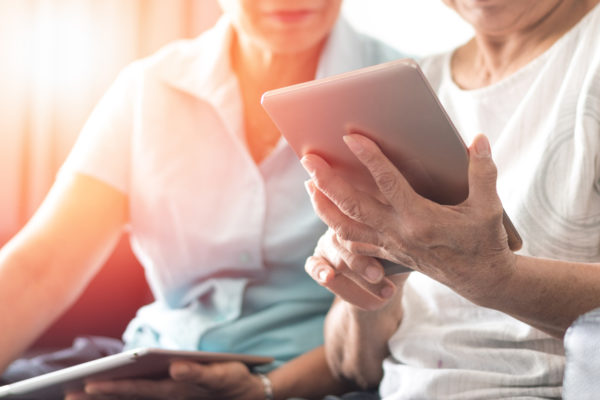Public health crises like what we are seeing with the spread of the coronavirus usually affect older adults most strongly. The Centers for Disease Control and Prevention reports the overall death rate from the disease at 2.3% of people who are infected, but that rate is 15% among adults over the age of 80 and 49% of adults who were critically ill. Entire cities may be locked down for an extended time, and when that happens, cellphones and smart devices become the most likely and, in many cases, the only way to obtain vital resources and knowledge.
But this creates a problem in who can and cannot cope well during these crises. Older individuals who are more susceptible to the virus deserve increased attention. Yet, plans for the aging population are largely forgotten. There is a digital generation gap that leaves out many of the most vulnerable. We need to rethink crisis management to communicate with older adults.
Imagine a public health crisis sequesters a younger person at home for a couple of weeks. She can keep in touch with colleagues at work via Slack and Zoom, and with friends and siblings via Instagram and Snapchat. She can follow the news about the crisis on a variety of social media that produces rapidly evolving information. If she starts to feel sick, she can peruse a variety of health-related websites and then contact a doctor’s office electronically.
Now imagine this situation for someone who is elderly and lives alone. He may have only a few days’ worth of groceries and medications that might run low. He may phone the agencies that usually help him, but no one is there to answer. Nursing home residents are at even greater risk because many of them are frail and living in close quarters. The news media recently focused on this precarious situation with a nursing home outbreak in Washington state.
These examples highlight the gap. Younger healthy adults gather supplies, connect to loved ones and follow the news via smartphones and the internet. Older adults are disproportionately excluded from such communication technologies. Only 40% of older adults use smartphones, and that rate declines to 17% among adults age 80 plus. Internet use is slightly higher, but more than a quarter of older adults lack access to the internet. And a majority of older adults say they need help setting up digital devices. As such, a public health crisis becomes an information crisis for older adults.
In the absence of information, older adults may underestimate risks or remain in place when they should not. They may be unable to contact the social services that typically support them with rides, meals, necessary daily medical needs or therapies. For many older adults, these services are not optional, and the absence of these services may precipitate declines that are irreversible.
We need to invest in training the most vulnerable generation to use digital technology and support service organizations that cater to seniors.
Smartphone apps or other technologies that have the potential to facilitate communication in late life may be too complicated for some adults or may require fine motor skills that are too demanding.
Many public and nonprofit organizations regularly serve older adults. Groups such as Meals on Wheels, Area Associations on Aging, and senior centers, with some minimal increase in funding, could be set up to deliver timely high-quality information during public health crises. Staffers who have data regarding the locations of the most vulnerable could facilitate delivery of resources.
Perhaps most importantly, some older adults are indeed tech-savvy. Connecting these older adults with their less technologically-minded peers may increase the number of older adults who do have access to information.
Access to information is vital during any crisis, but more so when it comes to public health. We need to keep in mind that a global health crisis can quickly turn into an information crisis if we don’t address the problem head on.
Karen Fingerman is a professor of human development and family sciences and director of the Texas Aging and Longevity Center at The University of Texas at Austin.
Bo Xie is a professor in the School of Nursing and School of Information at The University of Texas at Austin.
A version of this op-ed appeared in Psychology Today, Fort Worth Star Telegram, Austin American Statesman, Abilene Reporter News, Lubbock Avalanche Journal, and the San Antonio Express News.




